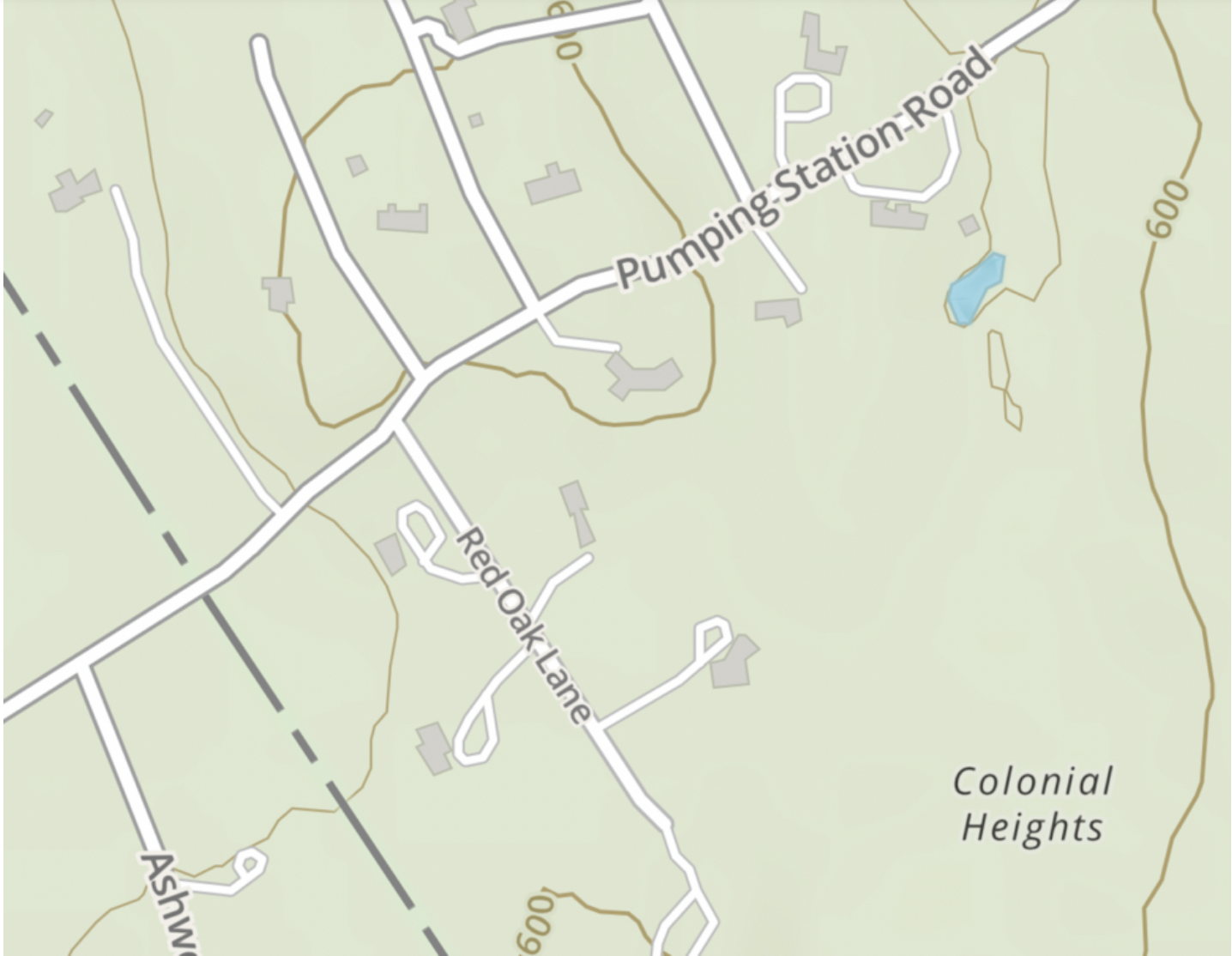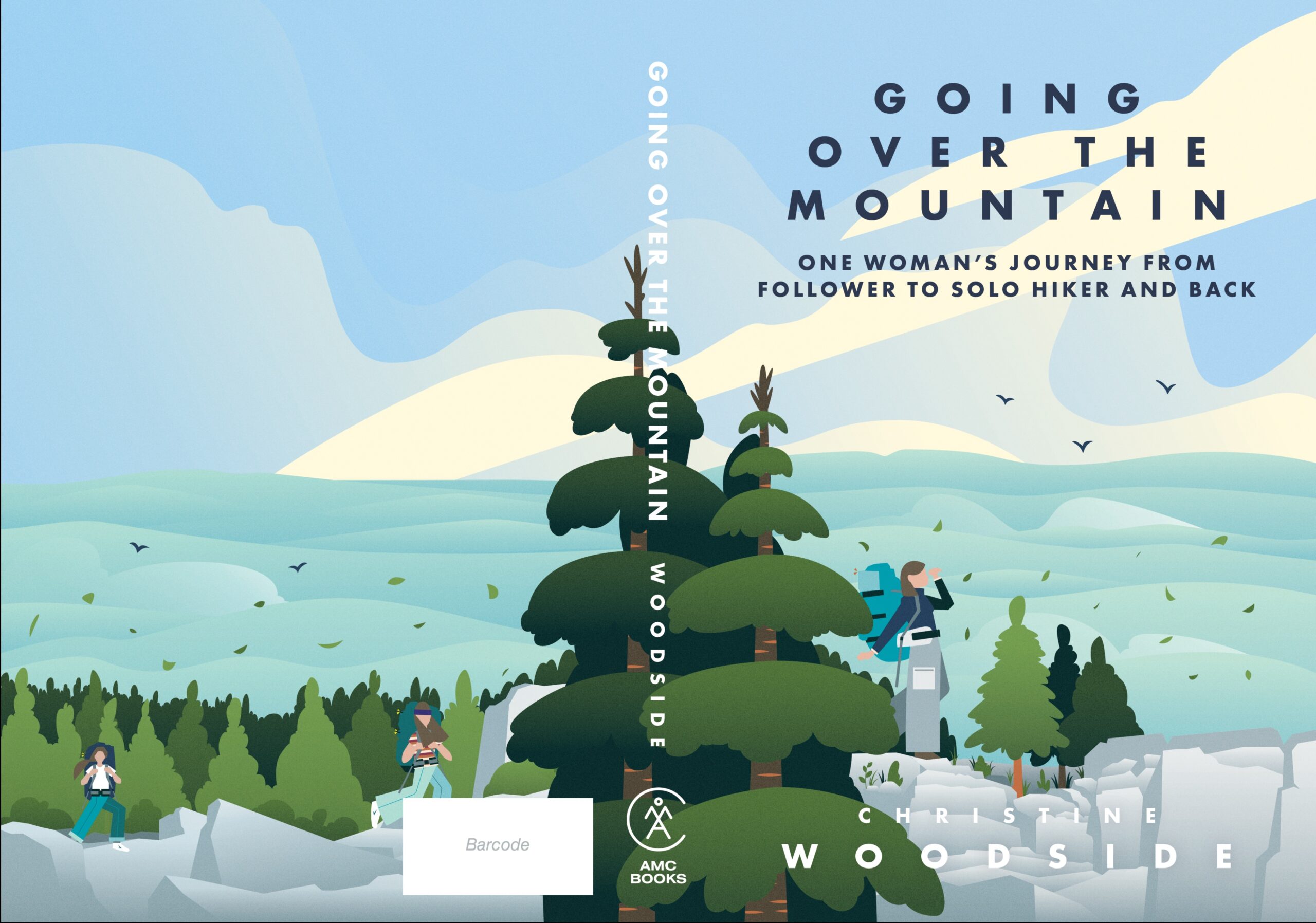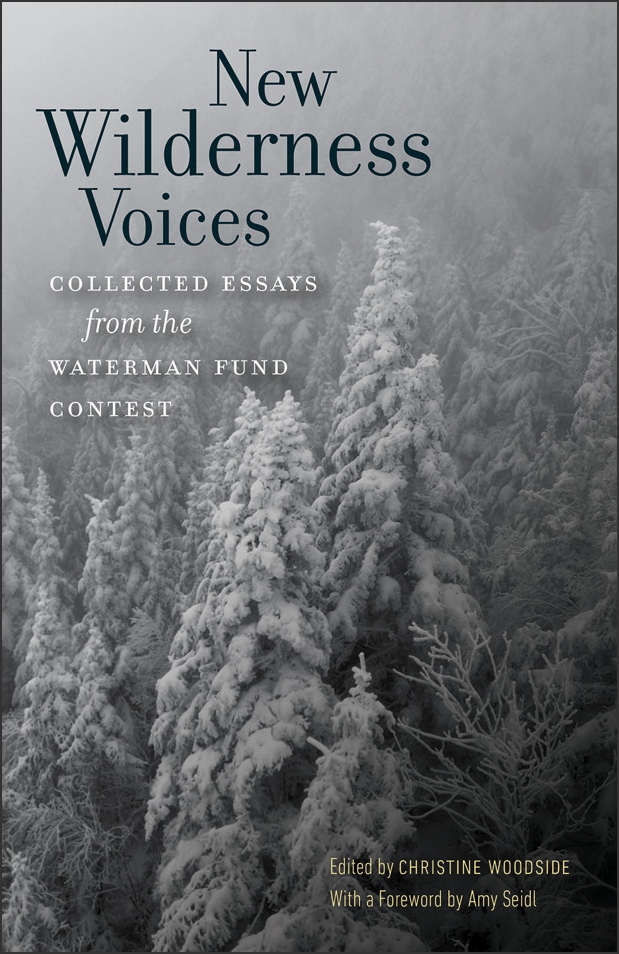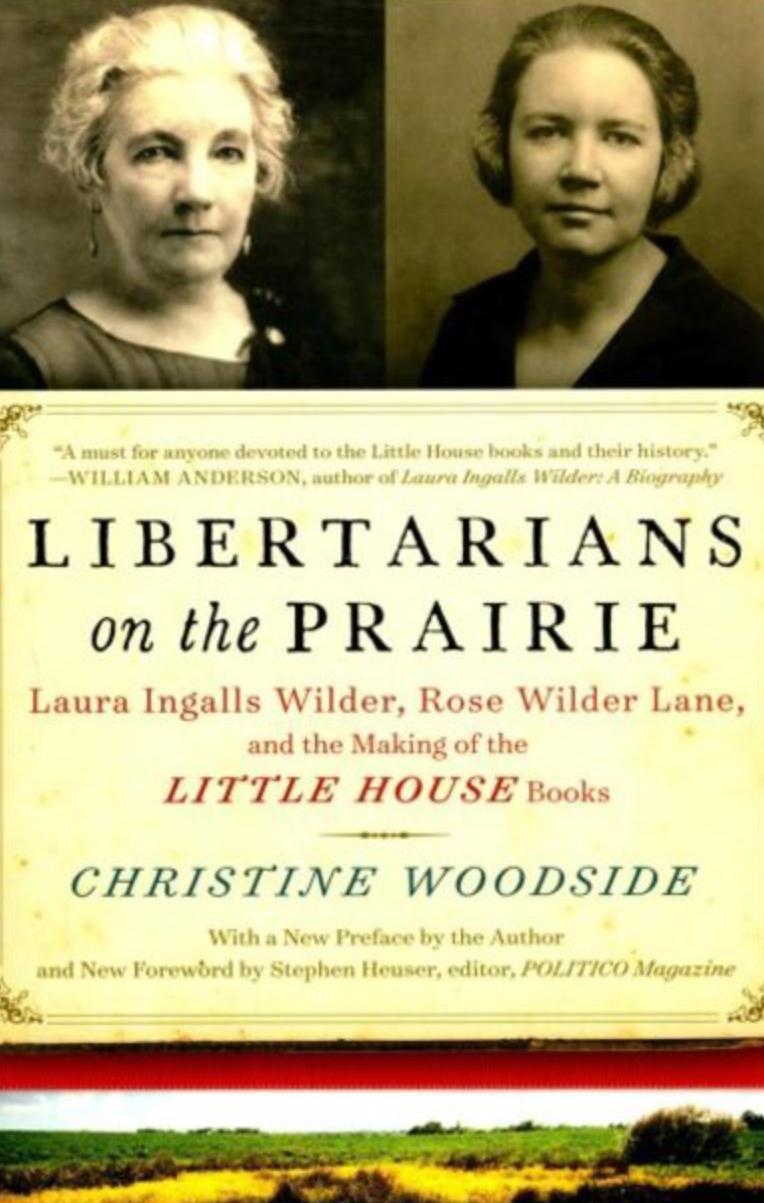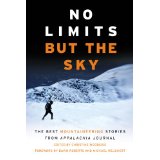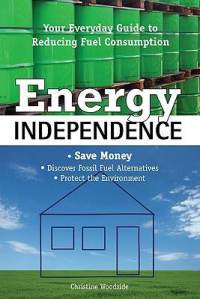Books
Short fiction debut
Running Wild Press’s new Short Story Anthology arrived yesterday with my story, “Pumping Station Road.” It tells the story of Lloyd, a lobbyist and trail runner whose big solo run of the length of Connecticut from east to west hits a snag. Lloyd believes he cares deeply about living an ethical life that respects community. But trying to complete this run leads him smack into some ethical quandaries when his girlfriend, a better runner, falls ill and can’t help him.
This is my first published fiction, although I’ve been writing stories for a while. I sold another story about a hunter whose truck breaks down and needs a ride to a book that is yet to come out. Short fiction allows writers to inhabit a character’s mind either wholly or in a limited way. I loved showing only what Lloyd could see and believe while still hinting at a wider reality by writing in the third person.
I felt like celebrating when my copy of the story collection arrived yesterday. Order a copy for yourself or a reader who enjoys fresh voices in fiction.
Thanks to Benjamin White, the editor, and the LA-based Running Wild Press.
Going Over the Mountain
Order your copy or e-book today!
Going Over the Mountain is a gorgeous tale of finding strength—and peace—in the mountains, and of raising girls to do the same. It’s a reflection on entering the woods as a follower, a solo traveler, a parent, and in community, for anyone who’s turned to the trail for comfort, or dreams of trying someday.
—Blair Braverman, adventurer and author of Welcome to the Goddamn Ice Cube: Chasing Fear and Finding Home in the Great White North
In Going Over the Mountain, Chris Woodside evocatively weaves vignettes from her intrepid decades on the trail—as a young woman finding her footing, then as a mother leading her daughters, and, finally, as a solo hiker aware of her own strength. In unspooling the lessons she’s learned from the mountains, Woodside offers an inspiring story about finding one’s way, both as a woman and in the wilderness. This book will make you want to cancel your week plans and pack your backpack.
—Erica Berry, author of Wolfish: Wolf, Self, and the Stories We Tell About Fear
With strong writing and a stack of true and compelling episodes, Christine Woodside takes her readers along on the progress of her mountain life from teen to wife, to mother, and the liberating triumph of her one-on-one solos. This deeply insightful memoir is wise and funny, easy to pick up, and impossible to put down.
—Laura Waterman, climber and author of Losing the Garden: The Story of a Marriage
I knew from her columns in Appalachia that Chris Woodside used word-magic, and here she uses it in a longer forum. Whether she is writing about her love for an old cooking pot or for camping in a storm with her daughters, reading T.S. Eliot’s poetry on the Appalachian Trail or racing to climb each New England state’s highest mountain in 48 hours, her life among the mountains reminds us eloquently that life devoted to these places will save us.
—Elissa Ely, writer for the Boston Globe, WBUR, and Appalachia
As a kid, I was a follower. I rarely had a sense of where I was on a trail except to tag along and for years looked for agency in the wrong places, like dance class. Then, in my early twenties I began my outdoors journey in earnest, soon falling in love with the mountains.
Over the course of a tearful Appalachian Trail thru-hike and a few thousand more miles, I pledged I would teach my two daughters the resilience that I had gained too slowly… and so took them on a seven-year quest full of debacles, danger, and laughs.
Another decade on, I decided I needed to explore alone for a while to discover every facet of myself and my relationship to the world. The rough-hewn, grubby feminism that developed over the course of this personal and professional time in these wild places changed me, and maybe my daughters, forever.
New Wilderness Voices
Collected Essays from the Waterman Fund Contest
Christine Woodside, editor;
Amy Seidl, foreword

A literary celebration of the Northeast’s wild places
Guy and Laura Waterman spent a lifetime reflecting on and writing about the mountains of the Northeast. The Waterman Fund seeks to further their legacy of stewardship through an annual essay contest that celebrates and explores issues of wilderness, wildness, and humanity. Since 2008, the Waterman Fund has partnered with the journal Appalachia in seeking out new and emerging voices on these subjects, and in publishing the winning essay in the journal. Part of the contest’s mission is to find and support such emerging writers, and a number of them have gone on to publish other work in Appalachia or their own books. The contest has succeeded admirably in fulfilling its mission: new writers have brought fresh perspectives to these timeless issues of wilderness and wildness. In New Wilderness Voices these winning essays are collected for the first time, along with the best runners-up. Together, they make up an important and celebratory addition to the growing body of environmental literature, and shed new light on our wild spaces.
AMY SEIDL is a lecturer in environmental studies at the University of Vermont and the author of two books on climate change, Early Spring: An Ecologist and Her Children Wake to a Warming World and Finding Higher Ground.
Contents
• Foreword—Amy Seidl
• Introduction—Christine Woodside, Annie Bellerose, and Bethany Taylor
• Letter to Readers—Laura Waterman
• Climate Change at the Top—Kimberley S. K. Beal (2008, Winner)
• A Dark Night on White Wall—Will Kemeza (2008, Runner-up)
• It’s a Seasonal Life—Sally Manikian (2008)
• Looking Up—Sandy Stott (2008)
• A Ritual Descent—Jeremy Loeb (2009, Winner)
• The Northeast’s True Hundred-Mile Wilderness?—Rick Ouimet (2009, Runner-up)
• Hunting the Woolly Adelgid—Dianne Fallon (2010, Winner)
• The Red Squirrel and the Second Law, or, What the Caretaker Saw—Jonathan Mingle (2010, Runner-up)
• On Being Lost—Blair Braverman (2011, Co-winner)
• The Warp and Weft—Bethany Taylor (2011, Co-winner)
• A Place for Everything—Katherine Dykstra (2012, Winner)
• Wilderness—Angela Zukowski (2012, Runner-up)
• Where the Trail Ends—Wendy Ungar (2012)
• Catching a Fish—Leah Titcomb (2012)
• Epigoni, Revisited—Michael Wejchert (2013, Winner)
• Steward’s Story—Devon Reynolds (2013, Runner-up)
• The Cage Canyon—Jenny Kelly Wagner (2014, Winner)
• Walking with Our Faces to the Sun—Nancy Rich (2014, Runner-up)
• Getting Lost in a Familiar Part of the Woods—Aaron Piccirillo (2014)
• One Tough Gal—Dove Henry (2015, Winner)
• Lady and the Camp—Erica Berry (2015, Runner-up)
• About the Contributors
UPNE
2017 • 200 pp. 5 1/2 x 8 1/2″
Nature Essays
$17.95 Paperback, 978-1-5126-0084-1
$14.99 Ebook, 978-1-5126-0085-8
Check your ebook retailer or local library for ebook availability.
View the publisher’s page and order directly.
Endorsments
“If you’re snowed in, rained in, or just in, New Wilderness Voices delivers two dozen calls of the wild. . . . Read this anthology and lace up your boots.”—Barbara Richardson, editor of Dirt: A Love Story
“As these writers contemplate wilderness they discover new, often unexpected connections to the natural world. . . . This anthology is all about deeper, more meaningful relationships with nature and the people with whom they experience it.”—Tom Wessels, author of Granite, Fire, and Fog: The Natural and Cultural History of Acadia
Libertarians on the Prairie
Laura Ingalls Wilder, left, and her daughter, Rose Wilder Lane, as they looked in the 1930s, when they worked on the “Little House” books
Now available from your favorite outlet. Coming out in paperback in October 2017
Laura Ingalls Wilder, Rose Wilder Lane, and the Making of the Little House Books

This myth-busting book finally reveals the true story behind the beloved children’s classics.
Generations of children have fallen in love with the pioneer saga of the Ingalls family, of Pa and Ma, Laura and her sisters, and their loyal dog, Jack. Laura Ingalls Wilder’s Little House books have taught millions of Americans about frontier life, giving inspiration to many and in the process becoming icons of our national identity. Yet few realize that this cherished bestselling series wandered far from the actual history of the Ingalls family and from what Laura herself understood to be central truths about pioneer life.
In this groundbreaking narrative of literary detection, Christine Woodside reveals for the first time the full extent of the collaboration between Laura and her daughter, Rose Wilder Lane. Rose hated farming and fled the family homestead as an adolescent, eventually becoming a nationally prominent magazine writer, biographer of Herbert Hoover, and successful novelist, who shared the political values of Ayn Rand and became a mentor to Roger Lea MacBride, the second Libertarian presidential candidate. Drawing on original manuscripts and letters, Woodside shows how Rose reshaped her mother’s story into a series of heroic tales that rebutted the policies of the New Deal. Their secret collaboration would lead in time to their estrangement. A fascinating look at the relationship between two strong-willed women, Libertarians on the Prairie is also the deconstruction of an American myth.
Christine Woodside is a writer and the editor of the journal Appalachia. The author of Energy Independence and editor of Living on an Acre and No Limits but the Sky, she has nourished a fascination with the Little House books since she was a girl. As a teenager, she applied for a summer job at the Laura Ingalls Wilder farmhouse in Mansfield, Missouri—but, residing in New Jersey, lived too far away. She now lives in Deep River, Connecticut, with her husband.
“Do anything you please with the damn stuff if you will fix it up.” —Laura Ingalls Wilder to Rose Wilder Lane, 1938
“A compelling ‘big picture’ look at the Little House books’ cultural impact and Rose Wilder Lane’s involvement with them.” —Wendy McClure, author of The Wilder Life: My Adventures in the Lost World of Little House on the Prairie
For More About This Book
See the catalog page of Arcade Publishing. See Chris’s September 2016 Politico feature on how the Little House books built modern conservatism. Read Chris’s Boston Globe “Ideas” feature, published in 2013. Check out the home page of this website for updates on book signings, talks, and other events.
No Limits But the Sky
Cover
The Best Mountaineering Stories from Appalachia Journal
2014, Appalachian Mountain Club Books

This anthology collects the most riveting, real-life adventure stories from America’s oldest mountaineering and conservation journal, Appalachia. Each of these essays, published from 1877 to the present, chronicles a tale of explorers who push the limits–of endurance, weather, altitude, or personal achievement. Some of these explorers make history, such as the first American climber to ascend Kilimanjaro in 1932; others, such as the leader of an 1895 team attempting a first ascent of Canada’s Mount Lefroy, never return. Freak accidents, legendary perseverance, and singularly colorful personalities and climbing luminaries such as Bradford Washburn, Elizabeth Knowlton, and Fritz Wiessner all figure into this great collection.
Illustrated with archival photographs.
Edited with an introduction by Christine Woodside.
Foreword by the climbers/writers Michael Wejchert and David Roberts.
Published in 2014 by Appalachian Mountain Club Books. Buy the book at the AMC online store and support the mission of protecting the Northeast outdoors.
.
Energy Independence
Cover of the 2009 edition

From the Introduction
Why You Need this Book
A kind of citizen energy consciousness has rooted itself in America. We now know too much to make fun of alternative energy as something for latter-day hippies living in yurts. This latest energy awakening really started in the late 1990s, when electricity supplies faltered during high-use summer periods. Then in late 2004 the price of crude oil started to rise; and since 2007 it has shot into ranges previously unimaginable. The shock of $40-per-barrel of oil in 2004 became $60, $100, and, by July 2008, above $140 before it began to slide again. Travelers began the 2005 summer season with $2.10-per-gallon gasoline, which seemed low a few months later, when Hurricane Katrina pushed prices to more than $3.00. This, in turn, seemed a bargain when economic instability and the unresolved war in Iraq pushed the price to more than $4.00 per gallon.
Clearly we live in volatile times, energy-wise. Although oil is still cheaper than harnessing most alternative forms of energy, like the sun and wind, the reality of cheap oil has started to lose its footing. This is not simply due to supplies and cost. The major cause of accelerated climate change, something we have observed for many decades, has become indisputable among scientists: fossil-fuel burning by humans. This leaves ordinary people and policymakers to ask how the consumer-driven way of life can scale itself back.
Many factors, from economic predictions to political tensions to war, influence oil prices. But one factor is coming into ever-sharper focus: The world’s oil reserves are dipping ever lower, and sometime in the next couple of generations, they won’t be the cheapest and most efficient way to power the majority of society.
We have dealt with short-term problems, such as a few unusually cold winters when people burned more petroleum than usual just when oil producers tried to cut their costs. More ominous are the long-term trends. Petroleum, natural gas, and coal are all finite resources. Demand for them is ever rising, particularly as the world population continues to grow, China continues its roller-coaster ride into the first world, and the United States continues to use a quarter of the world’s energy. Political leaders have known about all of these problems for years. And yet, despite the great interest in renewable energy and conservation by ever-increasing numbers of ordinary citizens like you and me, the country seems stuck in a state of anxiety. We have yet to take major action.
Gas for our cars now costs more than the inflation-adjusted price of the late 1970s. Even when adjusted for inflation, crude oil in 2008 reached historic highs of $140 per barrel before dropping again to under $100. This volatility stands up to what we experienced in 1979 (when it cost $38 per barrel or roughly $107 in today’s money) or in 1864 ($8 per barrel or about $134 in today’s money).
How desperate do we want to be before we look for other ways to power our lives, keep warm, and travel? Ordinary people are starting to ask why we must rely on a supply of oil that will run out in their children’s lifetimes to provide basic needs like heat and hot water. Experts predict that in the next halfcentury, petroleum reserves will reach a point too low to yield a benefit. As we approach that point, petroleum will continue to cost ever more as demand rises and extraction becomes more challenging. The United States relies on several other countries to supply our oil: Canada, Saudi Arabia, Mexico, Nigeria, Venezuela, and a few others that include Kuwait and Iraq, with which we have gone to war. Listening to the evening news can leave the average American feeling helpless about our dependence on foreign countries in unstable areas for that most basic need—fuel.
So far I have been talking economics—the supply, demand, and costs of the relatively near future—and making the argument that this instability should convince most of us to change how we plan to us energy in the coming years. There is a much greater reason, of course, for use to change our ways—one that I sometimes hesitate to invoke because it can be tempting to believe only what suits us if we doubt the guesswork of even the smartest scientists. That is, of course, the toll the pace of modern energy use has exacted on the planet. First of all, we are using up ancient stores of energy too fast to show much consideration for the coming centuries. More important, the burning of fossil fuels is linked with the quickening trend of global warming. The Earth has gone through warming and cooling periods in its very, very long history, most of which doesn’t involve us. But in the last century, a warming trend has accelerated dramatically. It is now an indisputable fact that this accelerated rise in the average yearly temperature on Earth over the past century is the result of humans releasing large amounts of carbon dioxide and other greenhouse gases into the atmosphere by burning oil, coal, and natural gas. Most of North America’s electricity generation, home heating, and transportation rely on fossil fuels. Until we use and develop alternatives, we will continue to feed our precious resources into the hopper of unnatural, human-caused, accelerated warming.
Have you ever felt like pulling away from this dependence on fossil fuels? I have, and yet when I started considering this a few years ago, I realized I didn’t know the first thing about how to do it. I was, and largely remain, an average East Coast dweller burning up fossil fuel in my car and in my house and applauding, from afar, off-grid handymen and people rich enough to buy two banks of solar panels. I’m changing, but I have learned that such change comes incrementally.
My husband, our two daughters, and I are neither handymen nor wealthy. We live in a 1,100-square-foot Victorian house in a tiny Connecticut town. My family considers itself frugal and environmentally conscious. We keep the thermostat low, turn it down at night, and turn off the lights when we go to sleep. We aren’t big television watchers. We have one home computer and no microwave. We cook from scratch on a propane stove and use a water-saving shower nozzle. Needless to say, I felt irritated and powerless when utility deregulation and supply shortages started to affect my region of the country a few years ago, and I started to pay closer attention to our electric bills.
One of our bills for one month, between mid-January and mid-February 2005, came to $216.37 for 1,694 kilowatt-hours of power. (Including all of the transmission and distribution surcharges in my state, the rate at that time was almost 13 cents per kilowatt-hour. Since then it has risen to almost 19 cents per kilowatt-hour.) In southern New England, nuclear and oilburning plants still provide much of the electricity. But this story of rising power demand and uncertain energy supplies is playing out in varying ways across the country. My family’s skyrocketing bills—roughly twice what we had paid only five years earlier—forced me to consider our electricity and where it comes from. I quickly learned that we were paying not only much more than we had budgeted, but that we were using almost twice as much electricity as the average household in our state, even though we have a small house and don’t heat with electricity. (We heat with an oil-burning furnace.) It was a puzzle to us, but it appeared that our electric hot water heater was the main culprit.
The same month, I talked to Ed Witkin, who at the time lived west of me in Bridgewater, Connecticut, with his wife, Ellen Shrader, and their two daughters. Their modern house ran almost entirely on solar energy. They were not connected to the electric grid; no wires extended up their long driveway from the street to their house. Forced by their own choice to be careful with power, they had settled into a routine of using no more than 150 kilowatt-hours a month. The Witkin-Shrader family was the same size as ours—two adults and two teenage daughters—and the house itself was larger than ours. They were using one-tenth of what we were in the winter (which is our highest use time because we don’t have air-conditioning). They weren’t sitting in the dark, washing in frigid water, or cooking on an open fire. Like my family they owned one computer and did without a microwave. Their daughters took long, hot showers just as ours did, they had a propane kitchen stove similar to ours, and they, too, watched little television.
Here is where they differed from us: Their refrigerator (a Sun Frost) was an ultra-low-energy brand, while ours was not; they heated water with solar collectors on their roof, while we heated our water with electricity; they used compact fluorescent bulbs in all of their fixtures, while we had only two in our house. My family was using more than ten times the energy they were. This realization that I wasn’t the au naturel, environmentally conscious woman I’d envisioned made me feel like a guest on Candid Camera, in which I’d first told some stranger on the street that I probably used less electricity than everyone I knew, only to find that I was a bad statistic.
What was up? We, like most Americans, were hooked on a way of life that used too much energy. We might not be wasteful people by nature, but we were going about our business without the feeling that we should turn things off. We didn’t consider it an emergency to replace our ten-year-old refrigerator. We thought that someday we’d get around to replacing the bulbs. We sometimes forgot to turn off lights and appliances. The Witkin-Shraders paid attention to everything, because they were collecting their own energy at their house and didn’t want to run out. We, on the other hand, knew that more energy would always be there for us, as long as we were willing to pay for it.
My husband and I had to face up to the fact that we were not doing enough by living in a small house and holding onto old appliances like our vintage 1993 refrigerator, which used four times the energy of many available new models. Our top-loading washing machine was even older, but because it still operated, we didn’t want to discard it even though it used far more power and water than the new front-loading tumble washers.
We relied on what we thought was an efficient electric water heater, bought only a few years ago. But then we started to believe that heating water with electricity is wasteful. Until that year when I compared my house to the Witkin-Shraders’, I did not realize that a family like mine could reduce our dependence on fossil fuels. I have since realized that our 1,100-square-foot Victorian house could drastically cut its
energy consumption. At a grassroots level all of us can begin to change the world by refusing to depend solely on distant sources of fossil fuels. It makes sense morally, financially, and, most of all, environmentally.
How do we do it? Making the move to using less energy isn’t an easy choice in financial terms, for us and for most middle-class people. But I’m pleased to say that my family has made major changes in just a few years, and yours can too. One year we bought a new refrigerator, the lowest-energy Maytag I could find. The next year we replaced the washer with a tumblestyle Frigidaire. Both were a little more expensive than what we were used to, but we immediately saw the savings in our electric bills. We replaced most of the lightbulbs in the house with compact-fluorescent bulbs. We are reducing our fossil-fuel usage step-by-step. We didn’t want to just sit back and wait for the large utilities to start using solar or wind power and thus make changes for us. (In fact our state, like many states, has added surcharges that enable it to put money into renewable sources, which means that officials are starting to help us move toward renewables, no matter how slowly that transition might be.) We took action ourselves.
So what happened to our energy use? We’ve done okay in three years. The electric bill covering the period from mid-January to mid-February 2008 was $191.65 for 1,071 kilowatthours. That month we owed roughly 11.5 percent less than for the same month in 2005, even though the rate (including the delivery surcharges) had increased by more than 38 percent. More important was our reduction in energy use by almost 37 percent. We have yet to replace our hot-water heater, so I know that we can improve on our record so far.
So far most of our changes have been to conserve energy. But what about installing equipment to gather energy from the sun, wind, a stream, or underground? These technologies are now available to home and apartment dwellers. How quickly can consumers recoup investments in alternative energy sources? My family is starting to consider these technologies as they enter the realm of affordability.
Don’t wait for alternative energy to become mainstream.Take steps as an individual now and create the demand for alternative energy that assures it will become mainstream. Whether you live alone or with others, in the city, the suburbs, or the country, you can take steps toward independence immediately.
We use more power than necessary. We must stop looking at alternative energy as deficient because it could never provide enough energy to directly substitute for oil. Yes, we can use alternative energy sources instead of oil, but we also have to commit to using less energy overall.
You can save money in the long term by spending money in the short term. Begin by using less energy as my family and I did—by changing your behavior and changing, little by little, your appliances and sources of heat and light (see chapters 9 and 10). Next, experiment with the two most viable and affordable alternative energy sources: solar panels or solar-thermal systems, and wind generators, which I discuss in chapters 2 and 3. Consider these fuels, developing technologies, and strategies, which I cover in chapters 4 through 9: geothermal heat pumps, biodiesel fuel, fuel cells, wood, micro-hydroelectric systems, alternative cars, and alternatives to driving.
The most important thing you can do, however, is this: Use less energy—an act you can accomplish quickly and that’s necessary when using most alternative energy sources. While conservation has yet to catch on as a habit in the United States, we must learn to conserve energy in a time when energy companies are venturing into deeper and more complicated places to find oil, natural gas, and coal, and when worry in the marketplace has made prices of basic energy so high that it will disrupt our daily lives from here on out. It’s the most basic and important act we can perform. I have realized that the best way to conserve energy is to force ourselves into crisis mode. This means believing, as our parents did during hard times, that every car trip, every twirl of the thermostat, every push of the light switch, every decision to buy an appliance, every choice about home-improvement projects, connects not to some do-gooder mentality per se, but to crucial necessity to reduce energy use. We must learn to think of conservation as our response to a crisis that the country has been slow to accept and even slower to act on.
It’s not hard to conserve, but it means we have to go against the grain of our friends and family and start thinking differently. High on my list, now that we have a lower-energy refrigerator and washer and use compact fluorescents, is to limit my use of hot water by taking shorter showers and not leaving the water running while I rinse dishes, to explore trimming the tops of a few critical trees to install a solar hot-water system on our roof, to replace my old Ford Taurus with a used Volkswagen Golf (combining low cost with fairly high gas mileage) or, perhaps, even a hybrid, and to drive fewer miles.
As Thomas L. Friedman, columnist for the New York Times, said in a speech at Brown University in 2008, it doesn’t really matter whether we reduce energy use because of climate change or because of dwindling world supplies. What matters is that we reduce energy use. Just a few years ago, those most likely to aggressively conserve energy were those who viewed it as a matter of environmental ethics. Now the ethics of saving energy is beginning to converge with the economics of doing so. In a sense I couldn’t be happier that my friends and acquaintances are talking about climate change and energy prices, because I can see that everyone is starting to care. It might sound a little cynical to look at things as Friedman does, but I daresay he’s right: What matters is that we reduce energy use, period.
We, the people, can force the issue, and we can do this now.
About This Book
I was sitting at my desk one day in 2005, no doubt worrying about the next assignment, when the phone rang. Or did the email silently slip into the In box? It was Holly Rubino, an editor at Lyons Press, a division of Globe-Pequot Press in Guilford, Connecticut. One of her colleagues was looking for a writer to dig into how ordinary Americans could use less fossil fuel, a writer who was intrigued with the details of clothes dryers and hot-water bills and the per-capita energy use in California as compared to the rest of the United States. I love that sort of thing. Here is how I knew Holly Rubino. Her mother is the town clerk of Lyme, Connecticut, part of my newspaper beat for seven years. Her mother gave me ideas for short stories, inspired me to work harder, asked about my daughters, and remembered me. This is how projects are born.
To buy Energy Independence from Barnes and Noble, click here. To buy it from Amazon, go here. Or Powell’s Books, here.
1—The Situation Today: Oil Still Rules
Petroleum rules, and coal is tied with natural gas for second place. All three have accelerated world climate change. Starting roughly forty years from now, something must take their place.
2—Demystifying Solar Energy
From President Carter’s solar panels on the White House roof to NASA’s newest solar panels, the technology for harnessing the sun has dramatically improved. A look at how they work, how to start small, the estimated costs (both financial and environmental), and the amount of time it takes to recoup your investment.
3—Wind Generators at Home
What are wind generators and how do they work? A primer on wind power on a large scale. How to start small, how to deal with the neighbors, products, and costs, and the amount of time it takes to recoup your investment.
4—Other Technologies: Fuel Cells, Biodiesel Fuel, and Geothermal Heat Pumps
While the predictions of a hydrogen economy still resemble a science-fiction story, fuel cells have made some progress. How do they work, and where can you buy one? Biodiesel fuel for cars or furnaces (primarily vegetable oil) has become an industry. Geothermal systems tap into a constant natural temperature below the ground.
5—Heating with Wood
The oldest heat source remains a good choice for alternative energy in many areas. A look at using wood as a backup without polluting, using scrap wood and wood pellets, wood furnaces, and the costs and impact on the air.
6—Harnessing a Backyard Stream: Micro-Hydroelectric Systems
The first hydroelectric dam went up in Egypt thousands of years ago. New Englanders started running machines off water power 350 years ago and promptly wiped out some fish populations. Now that many of the old small dams are gone, we are looking at the power of water on a small scale again. This time you must cooperate with the fish. Who can use a micro-hydro system?
7—Alternative Cars
Gas-electric hybrid cars, plug-in electric cars, and hydrogen vehicles: Will these technologies ever work well enough to dominate? A look at alternative cars, specific models and costs (financial and environmental), the length of time it takes to recoup your investment, and a comparison between a standard hybrid and a similar traditional car.
8—Conservation: Not a New Idea
Conservation as a philosophy. A brief history. Ways in which efficiency has become mainstream: housing insulation, cleaner gasoline, high-gas-mileage cars.
9—Conservation Tips
A list of effective actions to cut back on energy consumption: restraint, choosing efficient appliances, insulating walls, changing lightbulbs, exploring new behavior at home and in the car, and taking a tough survey of your total energy use.
10—An Appliance Manifesto
A call for every citizen to discard energy hogs. Determine which appliances are extraneous in your life: the free-standing freezer you forgot about? the microwave oven? the hair dryer? Scrutinize it all. You have nothing to lose but your kilowatt hours.
Appendix: Where to Learn More
General Information about Energy Consumption
and Alternatives
Notes and Index
Soul of the Sky
Exploring the human side of weather

Soul of the Sky is a different kind of weather book. It’s not preoccupied with charting fronts, defining what an isobar is, or trying to get you to memorize the conversion formula from degrees Centigrade to degrees Fahrenheit. Instead, it’s a collection that illustrates how the weather can inspire and terrify, connect us and urge us on to new adventures, and invite us to gain a deeper appreciation of how weather and climate affect our everyday lives.
Essays by Annie Dillard, Gretel Ehrlich, Chet Raymo, Jan DeBlieu, Dave Thurlow, Eric Pinder, Robert Henson, David Laskin, Mary Reed, Christine Woodside, Peter Felknor, Jeff Grabmeier, Robert Irion, John Hanson Mitchell, Paul Breeden, David Clark, Diane Ackerman, Craig Werth, Catherine Buni and Ralph Adler.
Soul of the Sky was the companion book to the Observatory’s former nationally syndicated radio program, the Weather Notebook. The National Science Foundation supported the book. Compiled and edited by: Dave Thurlow & Ralph Adler. North Conway: Mount Washington Observatory, 1999. Paperback, 150 pages. But it from the Mount Washington Observatory, Barnes and Noble, or Amazon.
Excerpt from my essay, Rage on Grassy Ridge
To my list of fears — the dark, strange dogs, wasps, and ladders — I added a dread of thunderstorms after the night of April 22-23, 1997. My two young daughters and I spent that night inside a tent while a thunder, winds, and rain whipped across Grassy Ridge, an open saddle at 6,050 feet in the Appalachian Mountains at the Tennessee-North Carolina border.
The gray clouds rolling in that evening did not look threatening. It was not cold when we left, but the temperature dipped as the storm thrust in to meet our campsite. Long stretches of wind and driving rain hit between about midnight and dawn. I sat up most of the night trying to stop the tent from swaying. I stretched my arms into a beam to hold up the tent while the storm lashed from the northwest at a 45-degree angle against the nylon.
Going into that night, I had slept in a tent in the Appalachian Mountains between northern Georgia and central Maine probably 45 times, and in trail-side shelters at least 80 times. I’d never had rain like this. In the spring of 1987, the year I hiked the entire Appalachian Trail, I trudged through daily afternoon thunderstorms for about 10 days. During one deluge, lightning ripped open a tree a quarter mile north of where I stood huddled with my friend Cay. At the crash of electricity destroying the tree trunk, I practically jumped into her arms in fear. But a moment later, we started hiking again. We saw the giant shards strewn down the forested incline. I wasn’t scared, just impressed. I liked thunderstorms. I relished the sweet smell of a downpour that breaks long days of strangling heat.
I drove more than 800 miles to the grassy highlands of Tennessee and North Carolina from our house in central Connecticut to make reality out of an idle dream. “Did you know there are mountains with just grass growing on top?” I asked Elizabeth and Annie, ages 8 and 6, one night as I was putting them to bed. One of them said, “I want to see them.” “I’ll take you there someday,” I promised. The nightlight cast a comfortable shadow on their round cheeks.
About This Book
The essay I wrote for this book was my first major sale as a freelancer and my first sale done by email. Ralph Adler, the editor, had posted an online ad for contributions. I wrote the essay in a few days after he extended the deadline. I still remember jumping around the office I was then renting on Main Street in Deep River after receiving the acceptance email on my old laptop.
Living on an Acre
Chris at the Big E Connecticut writers’ table with ‘Living on an Acre’
Go Forward by Going Back in Time

Homesteading fever gripped many Americans in the 1970s. The movement got its fuel from energy shortages, the environmental movement, and a recession.
The United States Department of Agriculture, perhaps sensing that new enthusiasts might not know what they were getting into, decided to devote its yearbook of agriculture for 1978 to the movement. They called the book Living on a Few Acres. The USDA’s yearbooks of agriculture compiled the best advice for anyone who desired to learn from 1894 through 1992, when, unfortunately, they ceased publication. The yearbooks even now make a distinguished set of themed guidebooks for farmers, would-be farmers, and anyone who wanted to understand soil, climate, growing, and raising.
The 1978 volume followed that pattern by laying out practical, general advice from experts who talked almost as if they had stopped by your house to chat. Living on a Few Acres, edited by Jack Hayes, addressed people who wanted to try farming on a small scale and experienced farmers scaling back to part-time work for retirement.
For Lyons Press, I edited that volume and brought it up-to-date. I worked hard to leave intact the blunt yet sympathetic tone of that book while adding new data and sources. The 1970s were such an enthusiastic time. They were also a slightly nutty time. Everyone had a dream that could be found embroidered on a decorative pillow.
The author of the foreword was then-Secretary of Agriculture Bob Bergland. I have brought his history up to date, but many of his sentences unfold untouched. His advice to test yourself and enjoy the freedom of making a living from the land holds up today. He understood that this could be very difficult. He was himself a farmer.
A. Gene Nelson co-authored the important first two chapters about what it’s like to live in the country and considering the tradeoffs of leaving the city. At the time he was an extension farm management specialist at Oregon State University. Since 1990 he has been a professor of agricultural economics at Texas A & M University. I was able to get in touch with him, and he wrote: “Now that the USDA has discontinued publishing these yearbooks, you are providing a service by updating them. Much of the information is probably still relevant.”
Although we renamed this book Living on an Acre to reflect the shrinking size of country tracts, it serves the same purpose as the original. This is a practical guide to several enterprises. It is mainly for those who have not tried this experiment before, most of whom will keep their jobs in town (or in a home office, perhaps) or will live off a pensions or investments. Ninety percent of farm income in the United States comes from off-farm employment. If only it weren’t true, but that is the way it is. Really small farms, under 10 acres, make up about 10 percent of all farms in America. Think of that—an important minority of a vital industry supports itself on capital earned away from the farm.
Contents
Foreword: The New Back-to-the-Land Movement
Part 1: Pluses and Minuses
Living in the Country—a Diversity of People
Consider the Trade-Offs Before Leaving the City
Face the Realities
Changing to a New Lifestyle: Little Things Add Up
Part 2: Acquiring That Spot
Selecting a Community
Alternative Rural Communities
Making Your Final Choice
Part 3: Improvements for Your Place
Remodeling a House—Will It Be Worthwhile?
A Personal Experience
Building That Dream House: Don’t Be Caught Napping
Work and Storage Areas Outside
Landscaping: Get Help, Plan Carefully
Land Improvements—What You Need to Know
Your Farmstead Buildings
Water and Waste Disposal
Power Sources and Equipment
Part 4: The Big Picture
Five Years on Five Acres
Welcome to SweetAire Farm
Pigs and Pumpkins
The View from Golden Hill Farm
Attracting Wildlife to Your Land
The Benefit of a Woodlot
Part 5: Growing and Raising:
How to Do It
Fruit Trees
Grapes
Four Kinds of Berries
Vegetables
Organic Food
How to Market Produce
Ornamental Plants
A Plant Nursery
Dried Flower Arrangements
Herbs
Greenhouse Gardening
Beekeeping
Christmas Trees
Raising Pigs
Walnuts, Pecans, and Chestnuts
Chickens and Other Fowl
Rabbits
Beef Cattle
Raising Sheep
Dairy Cows
Dairy Goats
Horses
Vacation Farms
Dude Ranches
Part 6: Property
Disposing of Property
Transferring Land with Preservation in Mind
Providing for Your Heirs
How to Get Help
